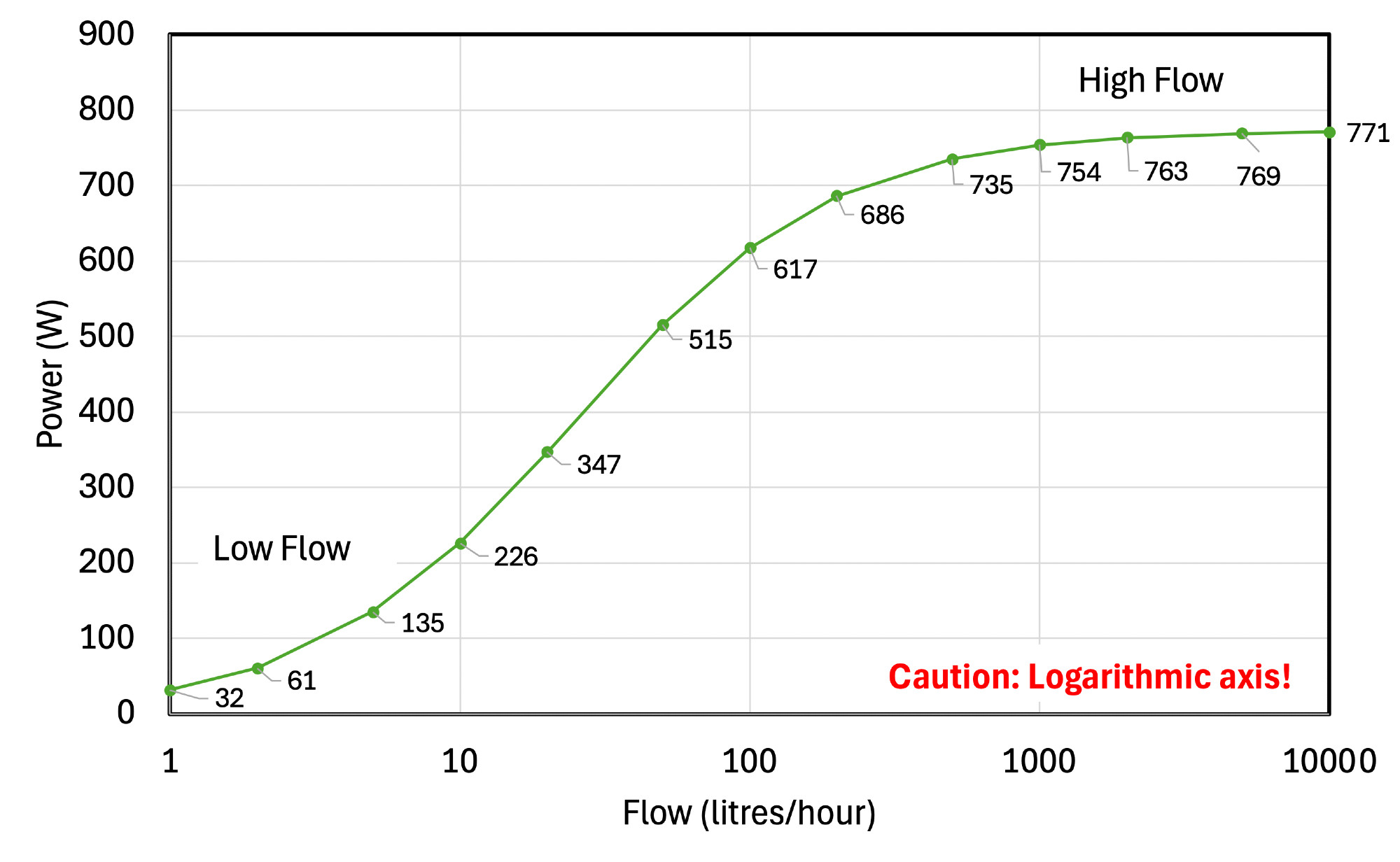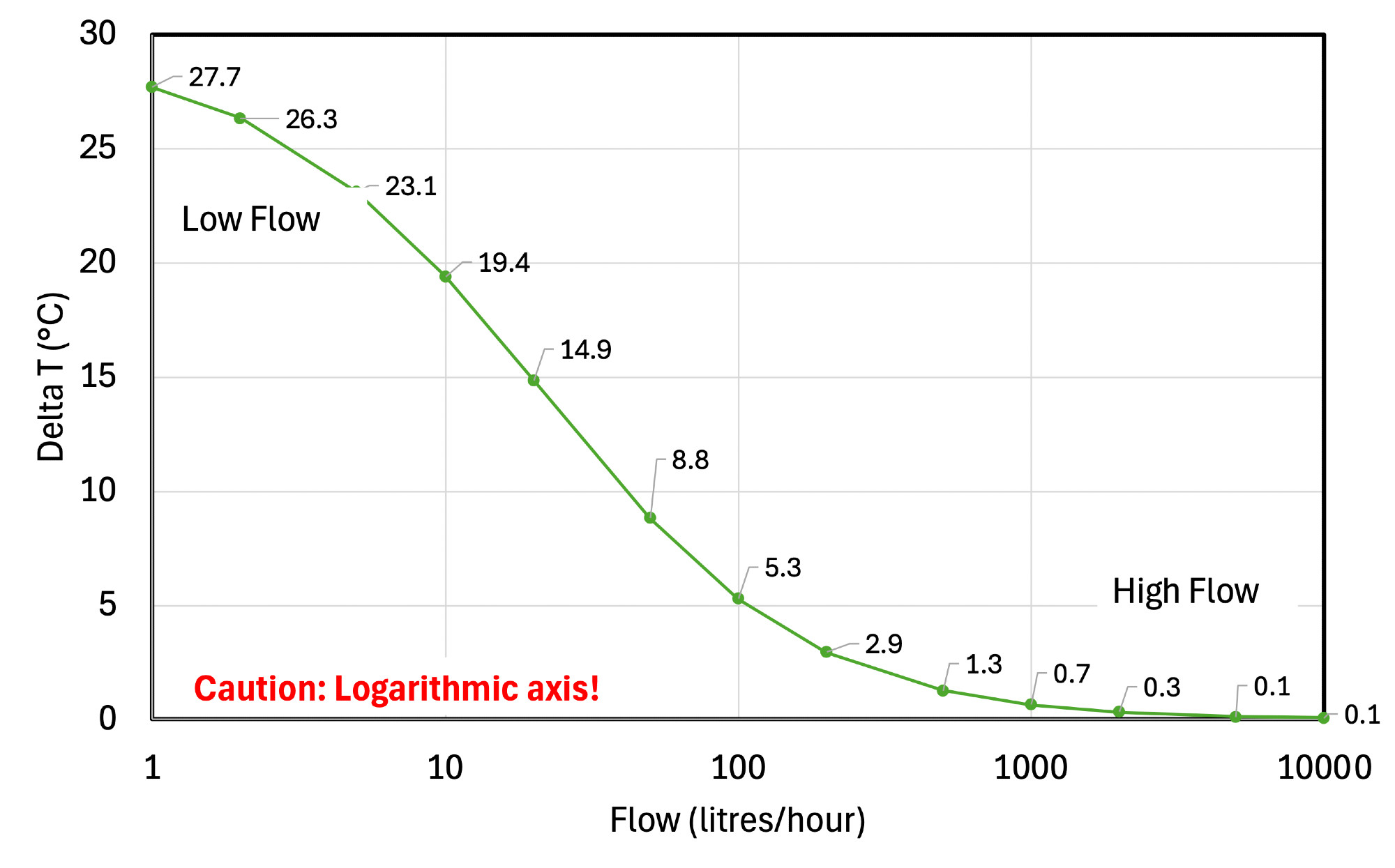How does the heat transfer from a radiator vary with flow rate?
If you have ever puzzled over this question, then this article may conceivably be of interest.
https://protonsforbreakfast.wordpress.com/2025/06/15/the-radiator-paradox/
If you have ever puzzled over this question, then this article may conceivably be of interest.
https://protonsforbreakfast.wordpress.com/2025/06/15/the-radiator-paradox/
1 / 2


Comments
The classic way is to use infinitesimal elements and integrate, leading to the Log Mean TD. More heat transfer from the hottest element.
Then, an empirical factor f for non-ideal geometry (bottom inlet, cross flow)
Link in alt
NTU method of calculating the log is good for this problem (inlet temperature and flow known, power and outlet temp unknown)
https://en.m.wikipedia.org/wiki/NTU_method
In my opinion, this is a case where the mathematics - i.e. the use of a logarithm - masks the simplicity of the physics.
But, as with any awkward mathsy problem we can approximate it as linear, over a small range (the second graph).
The error in the approximation, though very small, still adds up, to cause the paradox.
That's what happens to each litre of water passing thru the radiator.
we just do a variable change from "time" to "flowrate"
= (1/time) x RadVolume